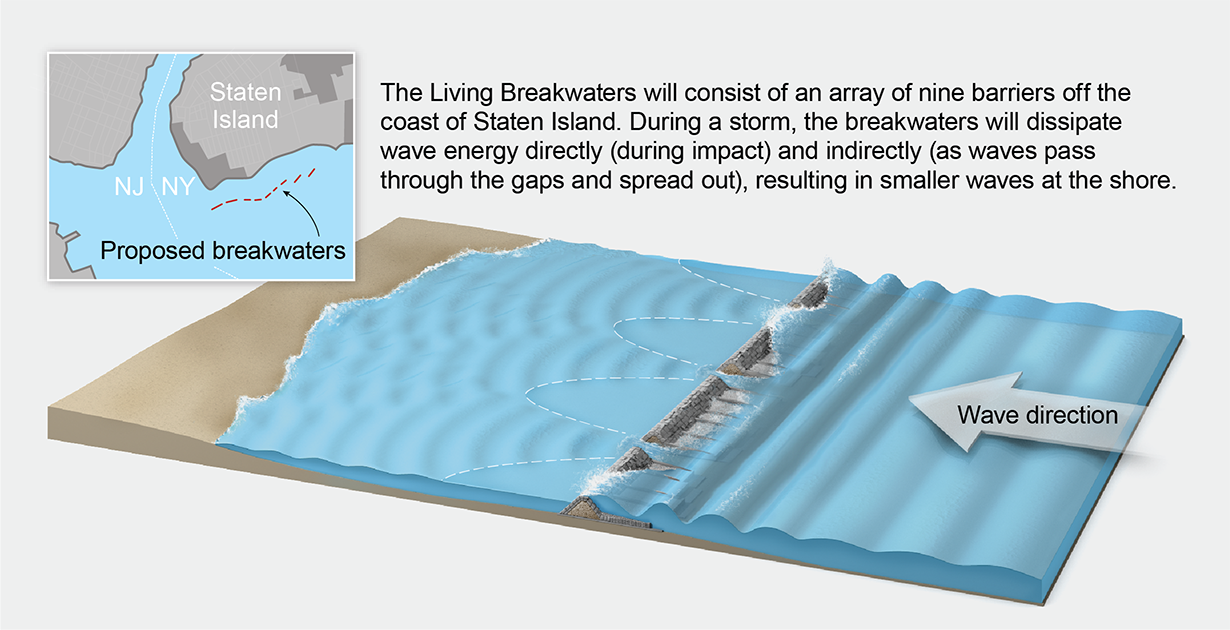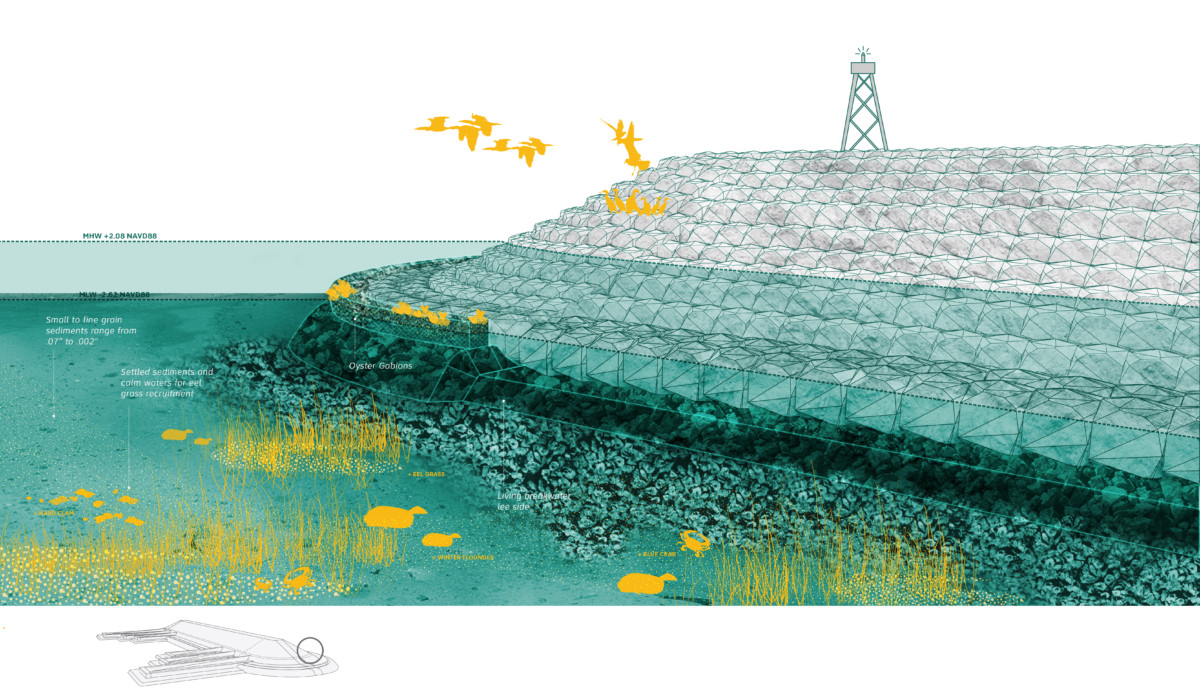


Construction is expected to begin in 2017. Living breakwaters or artificial reefs have principally been used as a means of restoring lost habitat in the past. The federal government approved a $60 million grant for the project back in April 2015. All of this activity could further make the zone a desirable habitat in which for crustaceans and fish to live. The Living Breakwaters project reduces risk, revives ecologies, and connects educators to the shoreline, inspiring a new generation of harbor stewards and a. In addition, the oysters, being filter feeders, could help to sift out toxins and pollution from the water. With the Breakwaters plan, the project’s barriers would be seeded with oyster “spats” (spawn), with a goal of bed growth in turn expanding the size of the underwater structures, further enhancing the ability to reduce wave energy. The project’s three primary goals are to reduce coastal risk, create and restore essential marine habitat, and build social resilience through the design and construction of new breakwater structures. The last oyster beds were closed by the 1920s. Living Breakwaters is an ecological and social resiliency project located off the South Shore of Staten Island. However, the buffers would also serve as a habitat to support sea life-especially oysters, which would be introduced…or, in truth, re-introduced.īefore the 20th-century, the waters of Staten Island were famous for exceptional oyster production-but by the early 1900s, outbreaks of typhoid fever were traced to harvests taken from area waters (as noted by ).
#Living breakwaters series
The plan is to build a 13,000 foot-long reef, consisting of a series of breakwater barriers constructed from concrete and recycled glass-underwater structures that help diffuse wave energy and temper beach erosion-in Raritan Bay and Lower New York Bay, along the coast of Staten Island. The project is called Living Breakwaters -intended as both a safeguard against storm waters and an ecological enhancement. However, another option to protect Staten Island is being adopted, and it’s counting on a certain bivalve to especially contribute. Living Breakwaters is intended to be much more than a defense against the inevitable superstorms to come in the age of climate change. The vulnerability to violent weather remains ever-present-and the Corps Engineers did reveal back in August 2015 that a seawall is in the works, with an estimated date of completion in 2021, as reported by cable news channel NY1. Army Corps of Engineers has since been studying its coastline, focusing on a 13-mile stretch between the communities of Tottenville and Fort Wadsworth-an area that has been hard-hit by major weather events-particularly Sandy and a December 1992 nor’easter that damaged hundreds of homes. WSP was part of the interdisciplinary team led by SCAPE Landscape Architecture that proposed the selected “Living Breakwaters” concept.A borough of New York City is looking toward oysters to help save it from future disasters.įollowing the heavy flooding caused by Hurricane Sandy in October of 2012, the threat of storm damage has been an issue of critical concern in Staten Island. cities most vulnerable to intense weather events. Department of Housing and Urban Development and the Presidential Hurricane Sandy Rebuilding Task Force launched “Rebuild by Design” to seek community and policy-based solutions to protect U.S. More than 200 people died along its path from the Caribbean to the northern states.

The cost of damage to the state was 32 billion, with 19 billion of that in NYC alone. In 2012, Hurricane Sandy hit New York City (NYC) and the barrier islands along the New Jersey shore. The need for enhanced erosion protection came into stark relief during recent storm events, including Superstorm Sandy, when the community of Tottenville experienced severe damage from storm surge. Futuristic breakwaters shield shorelines and ecosystems from superstorms. Additionally, wave activity, siltation, dredging and pollution have significantly deteriorated the marine ecology of Raritan Bay, including the once abundant oyster population and the rich biodiversity it supported. The southeastern shoreline of Staten Island, New York has experienced continued erosion over decades due to increasingly intense waves. Living Breakwaters Problem Description Rather than create a wall between people and water, Living Breakwaters embraces the water, increases awareness of risk, and steps down that risk with a necklace of breakwaters to buffer against wave damage, flooding and erosion.


 0 kommentar(er)
0 kommentar(er)
